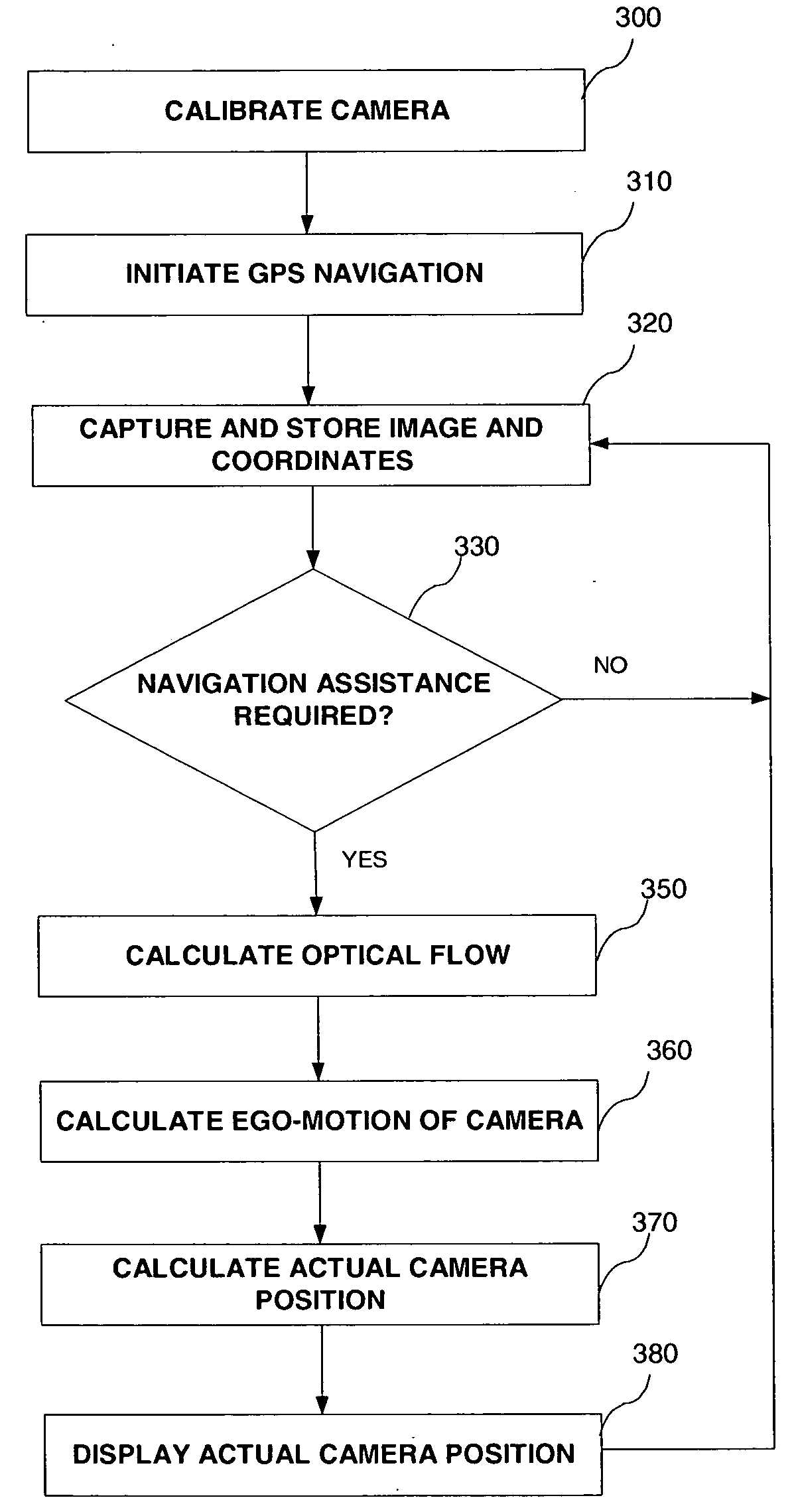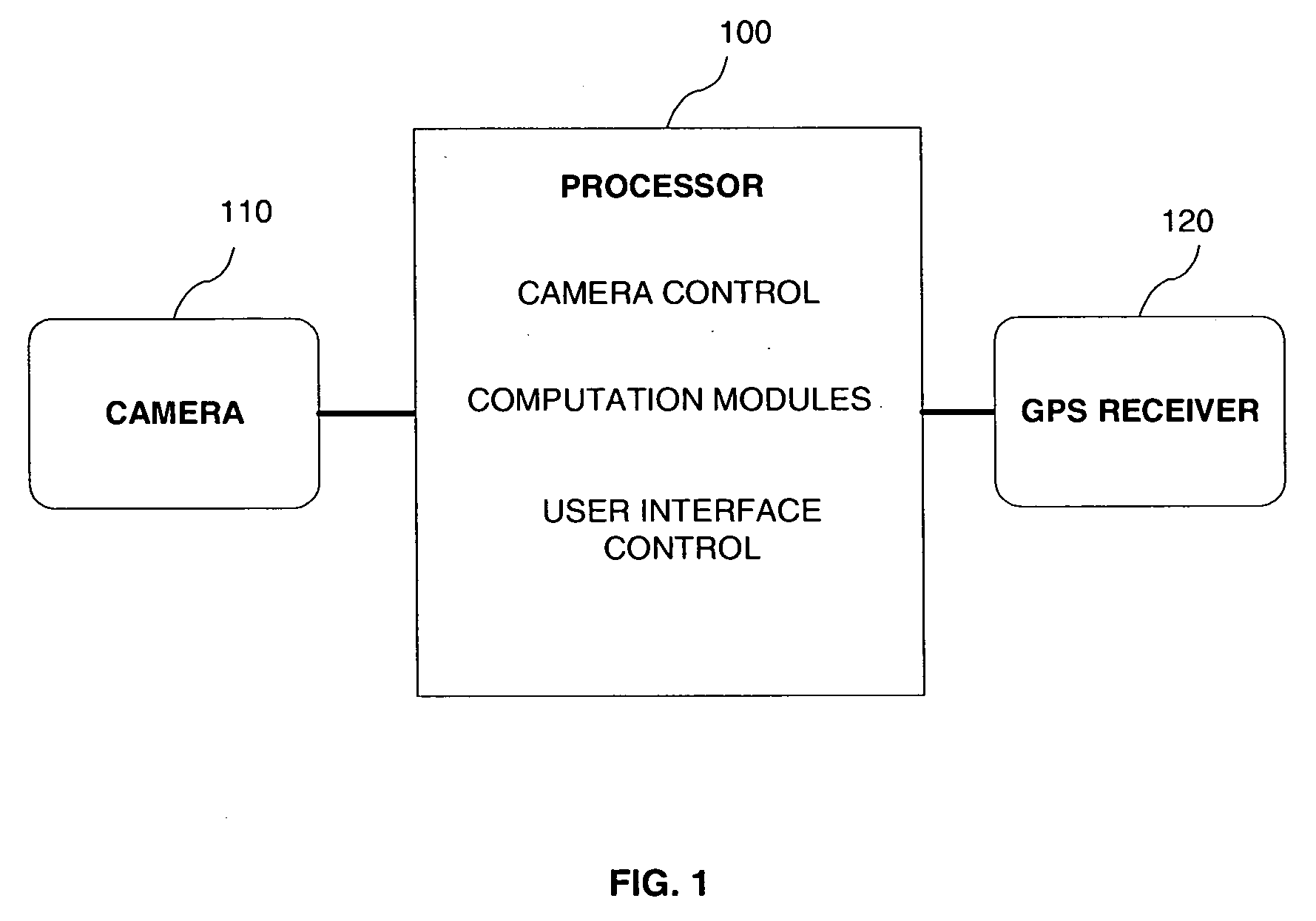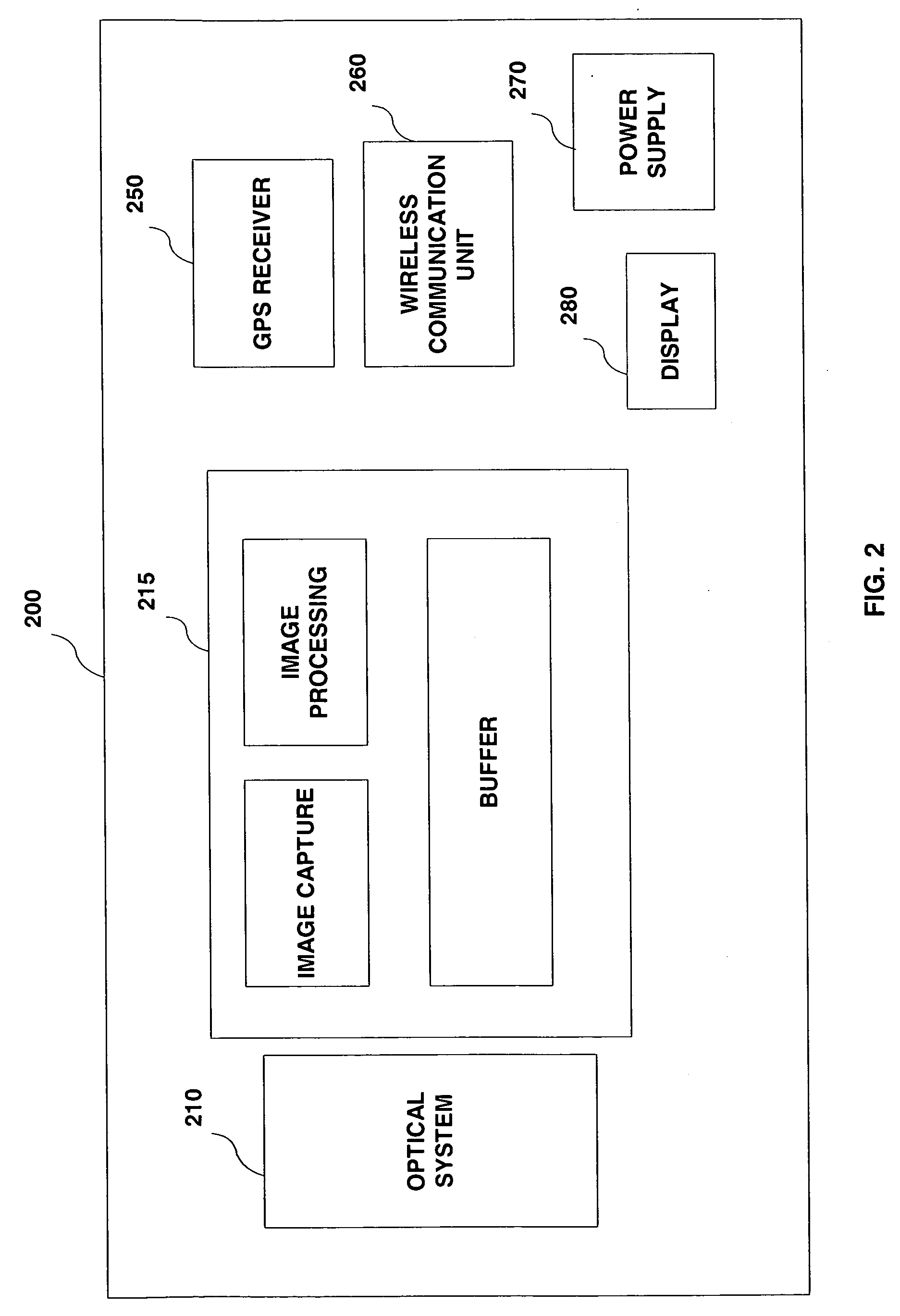Navigation aid
a monocular digital camera and navigation aid technology, applied in the field of navigation, can solve the problems of satellite signals unfit for position calculation, gps satellites may become unavailable to the gps receiver, and current global positioning system (gps) based navigation systems are inherently limited
- Summary
- Abstract
- Description
- Claims
- Application Information
AI Technical Summary
Benefits of technology
Problems solved by technology
Method used
Image
Examples
first embodiment
[0035]FIG. 3 is a flowchart describing the various steps involved in implementing the process of the present invention according to a
[0036]Step 300 is a preparatory step of calibrating the camera and lens. The calibration process measures camera and lens parameters such as focal length, lens astigmatism and other irregularities of the camera. These measurements are later used to correct the optical sensor's readouts. The calibration may be done using any method known in the art for calibrating digital camera lens distortions. According to one embodiment, the camera calibration uses the Flexible Camera Calibration Technique, as published in:[0037]Z. Zhang. A flexible new technique for camera calibration. IEEE Transactions on Pattern Analysis and Machine Intelligence, 22(11):1330-1334, 2000.[0038]Z. Zhang. Flexible Camera Calibration By Viewing a Plane From Unknown Orientations. International Conference on Computer Vision (ICCV'99), Corfu, Greece, pages 666-673, September 1999.
Both pu...
second embodiment
[0058]According to the present invention, the navigation aid may be used continuously and may serve as an additional means for accurate positioning along with a working global or local positioning device, preferably using the Kalman Filter algorithm for integrating the two data streams.
[0059]FIG. 4 is a flowchart describing the various steps involved in implementing the process of the present invention according to the second embodiment.
[0060]Steps 400 and 410 are similar to steps 300 and 310 of FIG. 3.
[0061]In step 420, two images are captured by the camera, optionally corrected with reference to the calibration step 400 and stored in buffer 240 along with their respective time-stamps. According to this second embodiment, the size of buffer 240 should only be sufficient for storing two captured images, as will be apparent from the explanation below.
[0062]In step 440, the optical flow is calculated in any of the methods described above in conjunction with FIG. 3. In this second embo...
third embodiment
[0065]According to the present invention, the navigation aid may function independent of any other global or local positioning device, for example as an orientation aid in a mine.
[0066]FIG. 5 is a flowchart describing the various steps involved in implementing the process of the present invention according to the third embodiment.
[0067]The steps are similar to those discussed in conjunction with FIG. 4, except that no GPS is required. Instead, initial reference coordinates, global or local, are set in step 510, to serve as reference for the subsequent relative positions calculated by the navigation aid.
PUM
 Login to View More
Login to View More Abstract
Description
Claims
Application Information
 Login to View More
Login to View More - R&D
- Intellectual Property
- Life Sciences
- Materials
- Tech Scout
- Unparalleled Data Quality
- Higher Quality Content
- 60% Fewer Hallucinations
Browse by: Latest US Patents, China's latest patents, Technical Efficacy Thesaurus, Application Domain, Technology Topic, Popular Technical Reports.
© 2025 PatSnap. All rights reserved.Legal|Privacy policy|Modern Slavery Act Transparency Statement|Sitemap|About US| Contact US: help@patsnap.com



